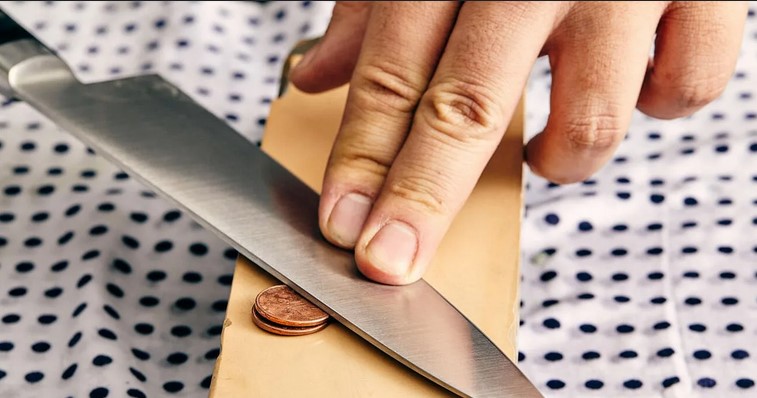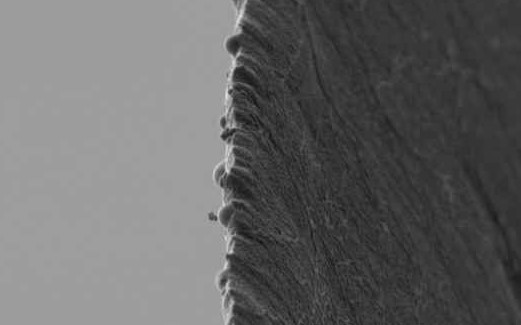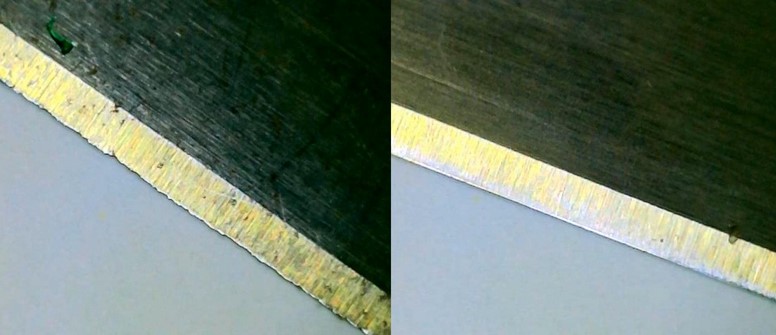
Use a chaira corretamente
Como usar a chaira corretamente? Sabe como usar a chaira? Pra que serve a chaira? A chaira afia a faca? São perguntas muito comuns de quem está começando a se interessar pelo fio das facas. Vamos responder todas elas!
A chaira, também conhecida como fusil, é uma ferramenta usada para manter a borda do fio das facas afiadas. Ela não é utilizada para afiar facas no sentido tradicional (isto é, removendo material da lâmina), mas sim para realinhar e endireitar o fio da faca que pode se dobrar ou entortar com o uso.
As facas geralmente são feitas de um metal mais macio para facilitar a amolação, consequentemente o fio entorta, ou desalinha, facilmente. Por isso o uso frequente da chaira faz-se necessário.
-
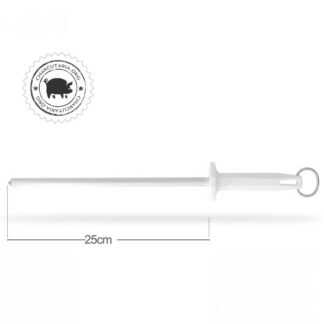 Chaira 25cm 10 StarretR$ 58,00
Chaira 25cm 10 StarretR$ 58,00
Como usar a chaira corretamente?
Antes de tudo, faça tudo de forma segura, certifique-se de que a área ao redor está livre de obstáculos e que você tem uma pegada firme na chaira e na faca. Agora vamos aos passos.
Posicionamento
A base da chaira deve estar firme em sua mão dominante.
Angulação correta
Mantenha a faca em um ângulo de aproximadamente 20 graus em relação à chaira. Este é o ângulo ideal para realinhar o fio sem danificá-lo.
Movimento da lâmina
Comece com o calcanhar da lâmina (a parte mais próxima do cabo) em contato com a chaira e deslize a faca para baixo e para fora ao longo da chaira, terminando com a ponta da lâmina. O movimento deve ser suave e controlado.
Repetição
Repita o processo do outro lado da lâmina, mantendo o mesmo ângulo e movimento. Alterne os lados da lâmina, fazendo cerca de 5 a 10 passagens em cada lado, ou até sentir que o fio da faca está realinhado e afiado.
Verificação
Após usar a chaira, teste o fio da faca em um pedaço de papel ou em um alimento macio para garantir que está afiado de maneira satisfatória.
Dicas Adicionais
- Use a chaira regularmente, idealmente ao final de cada vez que usar a faca, para manter o fio sempre alinhado e afiado.
- Para facas que estão muito cegas ou danificadas, você precisará de um afiador de pedras ou um sistema de afiação mais abrasivo para remover material e recriar o fio antes de usar a chaira para manutenção regular.
- Não aplique muita pressão ao usar a chaira, pois isso pode danificar o fio da faca. O movimento deve ser firme, mas controlado.
- Manter suas facas afiadas não só facilita o corte, mas também é mais seguro, já que facas cegas exigem mais força e são mais propensas a escorregar e causar acidentes.
Como a chaira funciona?
A chaira funciona através de um processo de realinhamento do fio da faca. Ao contrário dos afiadores tradicionais que removem material da lâmina para criar um novo fio, a chaira endireita as micro dobras e imperfeições que ocorrem durante o uso da faca.
Estrutura e material da chaira
A chaira é geralmente feita de aço duro e pode ter um acabamento liso ou estriado. Algumas chairas modernas também são feitas de cerâmica ou têm um revestimento de diamante para um efeito abrasivo leve adicional, ou seja, além de endireitar as bordas do fio também remove parte do metal para refazer o fio da faca. Você só precisará refazer o fio de uma faca quando esta perder a capacidade de cortar de maneira eficiente, mesmo após ter sido realinhada com uma chaira.
Quando refazer o fio da faca?
Corte Ineficiente
Se a faca não corta facilmente através de alimentos macios, como tomates ou cebolas, e requer mais força do que o habitual.
Deslizamento
Se a lâmina desliza ao invés de cortar, especialmente em superfícies lisas.
Teste do Papel
Se a faca não consegue cortar um pedaço de papel com facilidade ou deixa rasgos irregulares no papel.
Danos Visíveis
Se há danos visíveis no fio da faca, como entalhes, amassados ou serrilhados.
Uso Frequente
Se a faca é usada com muita frequência e para tarefas intensivas, pode ser necessário refazer o fio mais regularmente.
Como Refazer o Fio da Faca?
Pedra de Amolar
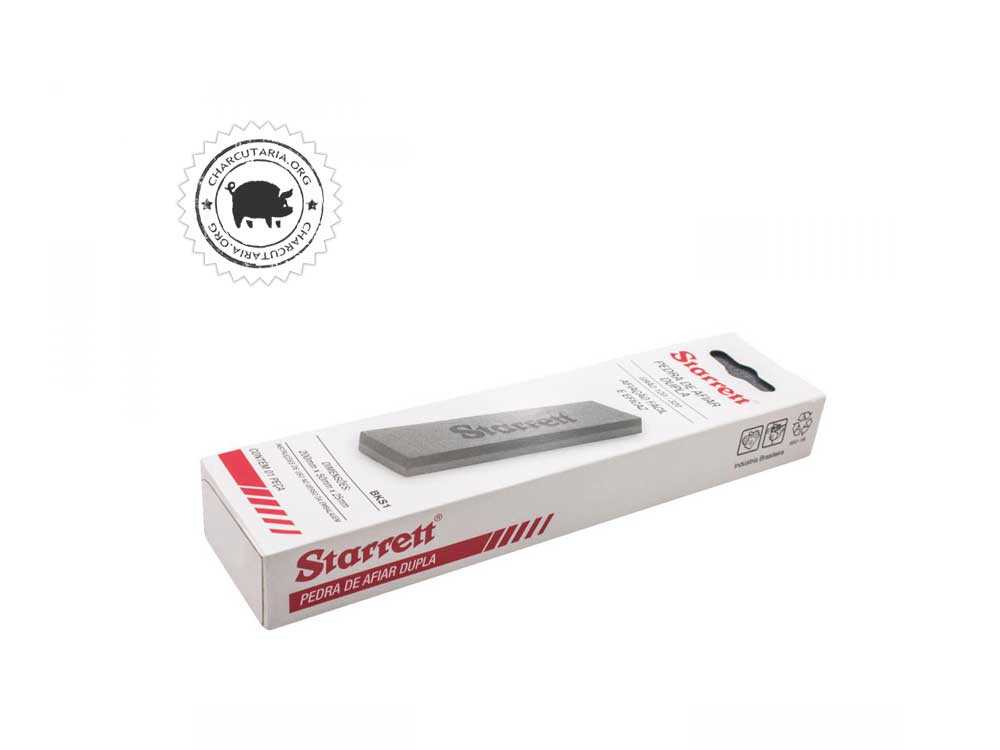
Pedra de afiar dupla face Starret
Pedra de afiar com dupla face para desbaste e acabamento.
Características:
- Dupla granulação: Lado para desbaste 120 e outro para acabamento 320.
- Dimensões: 200mm comp. x 50mm larg. x 25mm alt. (8’’ x 2” x 1”).
Recupera e refaz o ângulo e o fio de corte.
A ferramenta mais tradicional e eficazes para refazer o fio. As pedras de amolar vêm em diferentes granulações, sendo que uma granulação mais baixa (grosseira) é usada para remover material e recriar o fio, enquanto uma granulação mais alta (fina) é usada para polir e afinar o fio.
Afiadores elétricos
Dispositivos convenientes e rápidos, possuindo diferentes estágios de afiação que recriam e refinam o fio da lâmina.
Afiadores manuais
Afiadores de bancada ou portáteis que utilizam abrasivos para refazer o fio. Eles são mais fáceis de usar do que pedras de amolar, mas podem não oferecer a mesma precisão.
Como usar uma pedra de amolar
1) Se a pedra de amolar for do tipo que precisa ser molhada, mergulhe-a em água por cerca de 10 a 15 minutos antes de usar. Siga as instruções do fabricante.
2) Mantenha a lâmina da faca em um ângulo constante (geralmente entre 15 e 20 graus) em relação à pedra.
3) Passe a lâmina pela pedra, da base até a ponta, aplicando pressão uniforme. Alterne o da lâmina, para que ambos os lados afiem igualmente.
4) Após recriar o fio com uma pedra de granulação mais baixa, use uma pedra de granulação mais alta para afinar e polir o fio.




